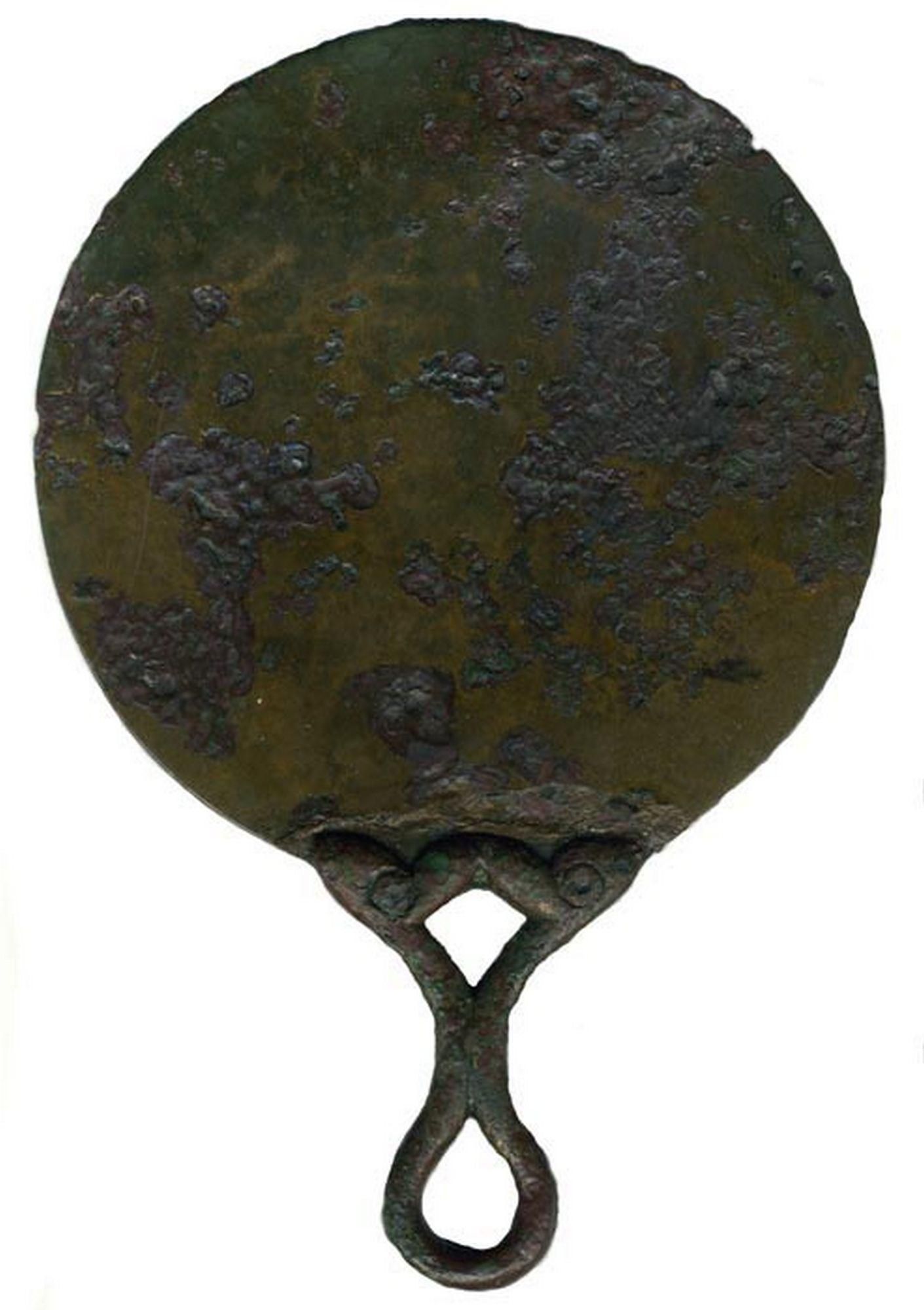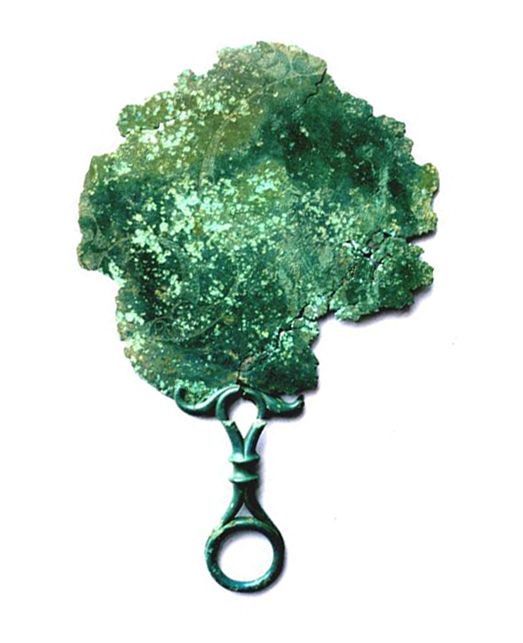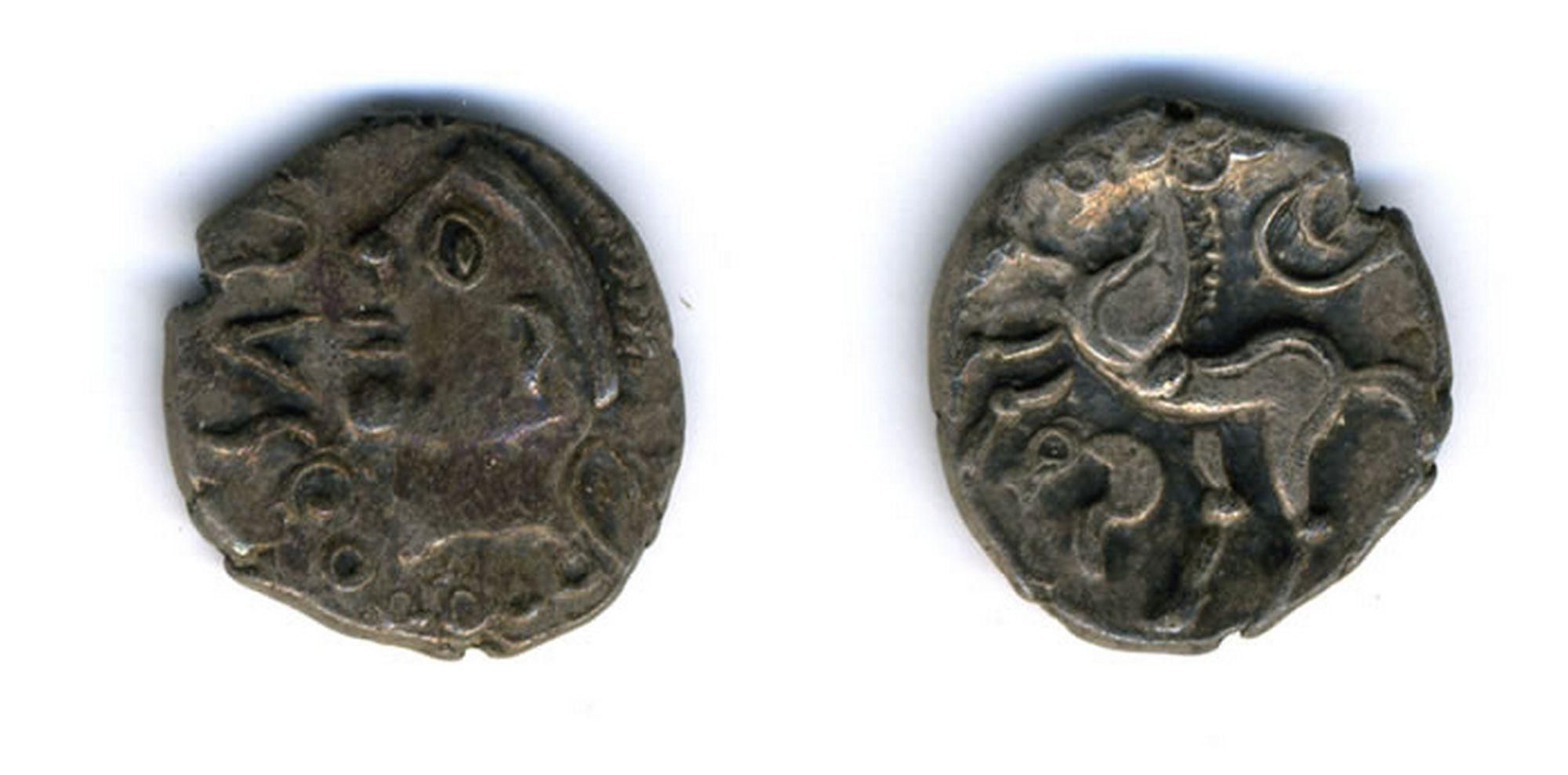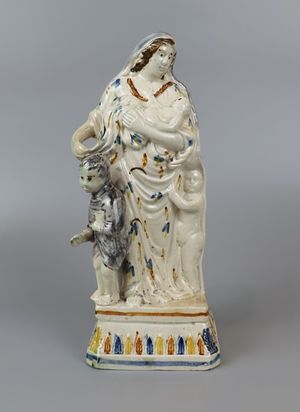In this Culture on Call article, Winchester City Museum volunteer, Lucy, reflects on the cultural significance of what may, at first, appear to many as a humble, household object. But what story does the everyday mirror share from the grave?
At Winchester City Museum, our Roman and Iron Age floor houses many unassuming items that reveal aspects of day-to-day life in Roman Britain, yet one item in particular stands (or rather shines) out from the rest – our bronze mirror, dating from around 150AD. Though seeing one's reflection may not have been its sole purpose, mirrors were common objects in this period, and are thought to have had spiritual significance, particularly at burial.
The earliest record of Iron Age burial mirrors is from 400 BCE in East Yorkshire, this phenomenon is almost exclusively found in the British Isles and most commonly found in female graves. A cist grave uncovered in 1999 on Bryher, Isles of Scilly, was found containing human remains, a mirror and a sword. It was the first found grave to contain both a sword and a mirror which raised questions on the sex of the person buried.
In 2023 scientists in a study led by Historic England found that the remains are female. The “Bryher Woman” changed archaeologists opinion on the use of burial mirrors as she was buried with both an object of femininity and of masculinity, therefore opposing the view that these mirrors were buried with women out of vanity. David Moon (curator of Archaeology for Oxfordshire Museum Services) notes that mirrors were associated with communicating with the dead and that as the mirror's reflection would face the deceased in the burial this is the most fitting conclusion of their use.
Our bronze mirror dates from around 150 AD and was found in a cremation burial outside of Roman Winchester’s North Gate. The handle design depicts two dragons joined at the snout. This design is reflective of the Iron Age belief that a dragon's path was important to the energetic flow of the physical world and would suggest that the mirror’s purpose was to connect the physical world and spirit world.

The Latchmere Green mirror was excavated in Silchester in 1994 and was found in a cremation burial. The mirror dates from roughly the 1st century BC and given the location and rough date of it, it’s possible to link our mirror to this one. The mirror is too corroded to see any design but it is most certainly of a similar handle design. The simple design of this mirror suggests this woman was perhaps more concerned with its implications of her death and attaining to her spirituality rather than showing its significance to anyone else with a flashy design, the simplicity reflects a humble femininity.

The tribe occupying Winchester at the time were the Belgae and the Atrebates occupied Silchester. The Belgae originated from northern Gaul and the Atrebates originated from the Artois region, both are modern day France so their genetic lineage is most likely the same if not similar. Although the Belgae came from a northern territory the fact they ended up in neighbouring British counties suggests a natural connection and a possible economical link as they would have traded with each other.
If there is a tribal link between the Atrebates and the Belgae, it therefore links the two mirrors together as they were made within the same century by almost the same people. While the Atrebates occupied Silchester and the surrounding areas, there is reason to believe they had significance in Winchester, Stuart Laycock suggests that the location of Winchester and the Belgae indicates Atrebatic influence which is unsurprising given their shared origin. There is evidence of Belgae and Atrebate trading at Winchester City Museum as we have coins depicting Verica, king of the Atrebates, which is reason to believe there was Atrebatic influence. If this is so, it is not unlikely that the mirrors have a connection to each other whether it is through design and purpose or even creator and family.

The link between the mirrors may not be through maker or family, decade or century, but undoubtedly through ritual and historical significance. Jody Joy estimates 58 mirrors have been found, predominantly in the south of England, which certainly creates a catalogue of heritage to these burials and women. We can never know for certain whether these two mirrors are linked by tribe but they are most certainly linked through spirituality and give the women of today solidarity and reflection on womanhood in Iron Age Britain.
Visit Winchester City Museum to discover a fascinating collection of artefacts - from the seat of Alfred the Great to Jane Austen and more.






